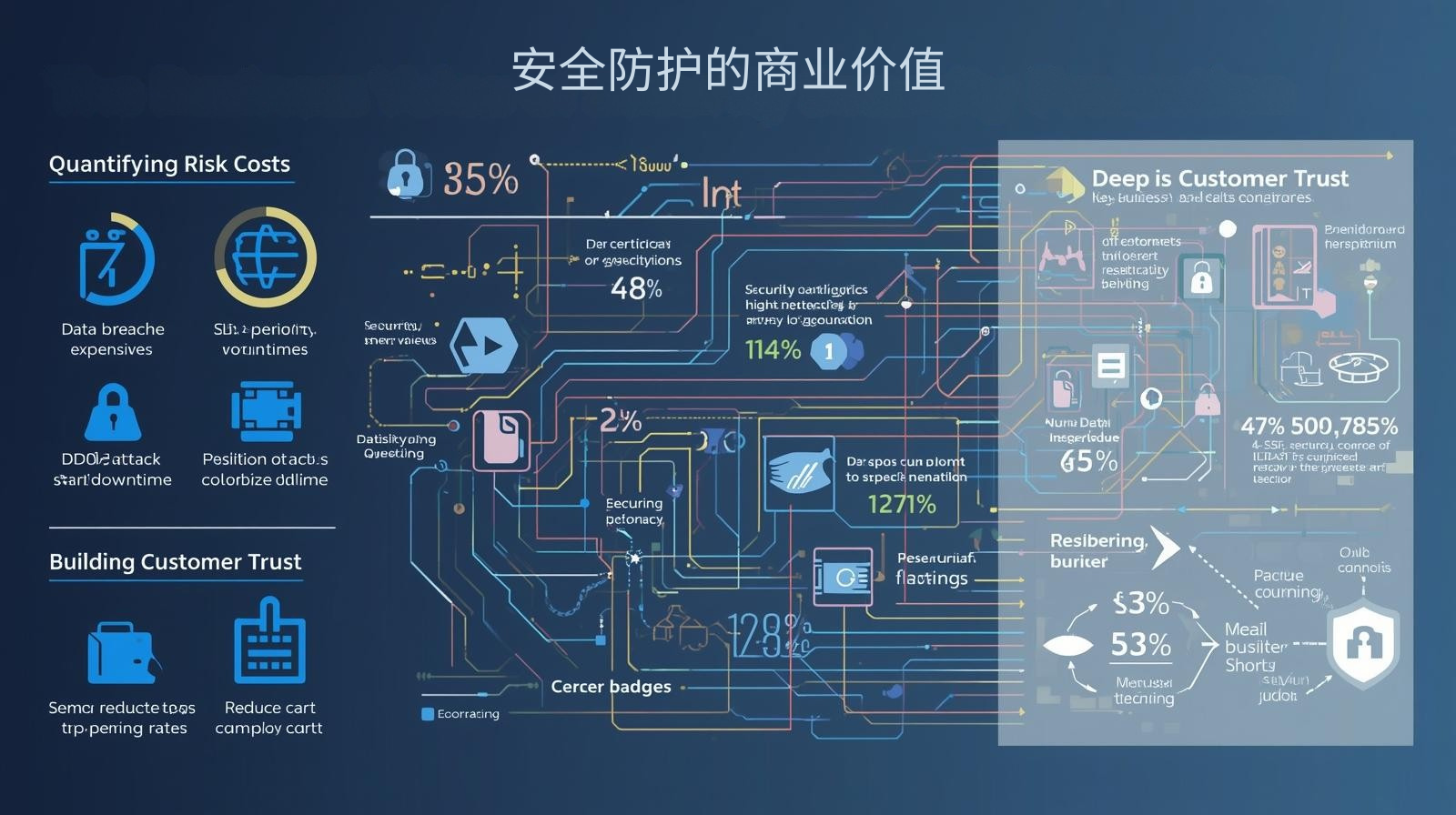According to a recent report from Cybersecurity Ventures, global e-commerce websites experienced an average of 1,372 attack attempts per week in 2023, with security breaches resulting in an average loss of $180,000. A survey by the China Council for the Promotion of International Trade (CCPIT) revealed that only 26% of independent foreign trade websites have implemented comprehensive security systems, and 60% of these sites have high-risk vulnerabilities. The "Global E-commerce Security Standards" released by the World E-Commerce Forum states that professional security measures not only prevent data breaches but also increase the trust of 37% of international customers, particularly high-net-worth individuals who are sensitive to payment security.
 The commercial value of security protection
The commercial value of security protection
1. Quantification of risk costs
- Data breach : Average cost $4.35M (IBM 2023 Cost of a Data Breach Report)
- DDoS Attack : $10,000+ in Downtime Losses per Hour (China Chamber of Commerce for Import and Export of Machinery and Electronic Products Case Study)
- SEO Penalty : Hacked Sites Drop 60% in Search Rankings (World E-Commerce Forum Data)
2. Building customer trust
- SSL certificates increase conversion rates by 18%
- Security badge display reduces shopping cart abandonment by 28%
Construction of a three-layer protection system
1. Web Application Firewall (WAF) deployment
- Core function : Block OWASP TOP 10 attacks such as SQL injection/XSS/CSRF
- Intelligent rules : Behavioral analysis based on machine learning (abnormal request interception)
- Configuration points :
- Avoid accidentally killing normal traffic (set a learning period)
- Update the rule base regularly (at least weekly)
2. Next-Generation Firewall (NGFW) Configuration
- Deep Packet Inspection : Identifying attacks disguised as legitimate traffic
- IPS/IDS : Real-time intrusion prevention and detection system
- Geographic blocking : blocking IP segments in high-risk areas (based on business needs)
3. Vulnerability scanning and repair
- Automated scanning : using tools such as Nessus/OpenVAS (weekly full site scan)
- Penetration testing : Hire a professional team to conduct quarterly audits
- Patch management : Establish a 72-hour emergency update mechanism for CMS/plugins
 Advanced Security Strategy
Advanced Security Strategy
1. Data encryption system
- Full site HTTPS (HSTS preloaded)
- Payment data PCI DSS compliant encryption
- Database field-level encryption (sensitive information)
2. Access Control Matrix
- Principle of least privilege (employee privilege grading)
- Multi-factor authentication (mandatory for administrators to enable)
- Login attempt limit (locked after 5 failed attempts)
3. Emergency Response Plan
- Data backup strategy (3-2-1 principle)
- Emergency Contact List (including hosting providers/security companies)
- PR response template (data breach statement, etc.)
Visit Pinshop's official website now to build an impenetrable protection system!
Recommended related articles: Multilingual Independent Station Strategy: Balancing Localization and Internationalization







